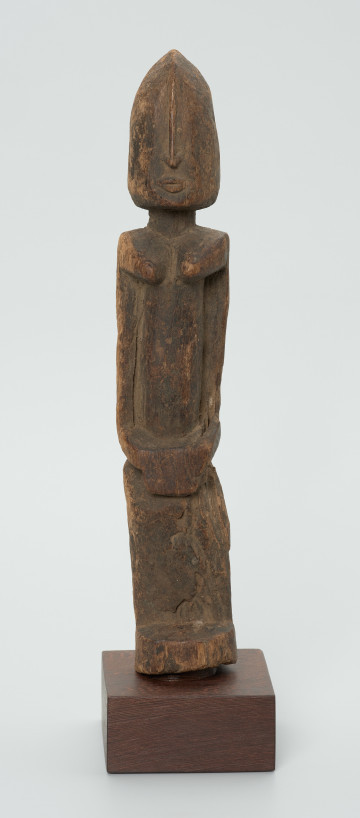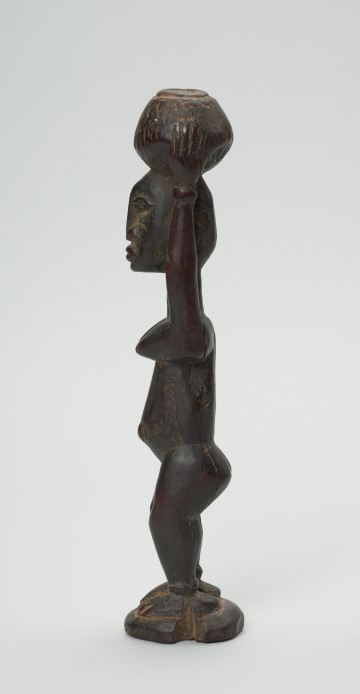
Figure - woman
między 1951 — 2000
National Museum in Szczecin
Part of the collection: Collection of Dogonian art
The most important motif in Dogon art are figural representations of ancestors, which are placed on altars dedicated to them. Images of real and mythical, male, female and androgynous ancestors appear here. The Dogon sculpted the first anthropomorphic figure in mythical times. It became the support for the nyama life force released by the death of one of the first ancestors. The figure representing a figure with the left hand raised is, according to the Dogon tradition, an image of a left-handed person. The Dogon believe that left-handed people are unique individuals possessing, in addition to their own nyama life force, a fragment of their father's energy. The fact unfortunately weakens the parent and augurs his/her imminent death. The birth of a left-handed child is a punishment for the mother's violation of one of the prohibitions binding her during the pregnancy. Because of the surplus of nyama, the left-handed are categorised as twins and have, according to the Dogon, special powers located in the left hand, favouring the family. Such people are built altars called bala during their lifetime to protect them and to increase and strengthen their nyama. On these altars, figures are placed with the left hand raised, which are symbolic representations of the altar owner. The sculpture of the left-handed is thus one of the rare examples of individualised representations in Dogra art, as each refers to a specific person.Bala altars are made of earth formed into a mound, and in addition to wooden figures, iron hooks and bracelets are placed on them. During the life of ginna they are placed in a corner of the house and after death they are moved to a niche on the facade of the ginna house.
Ewa Prądzyńska
Author / creator
Dimensions
cały obiekt: height: 56,5 cm, width: 11 cm
Object type
figure
Creation time / dating
Creation / finding place
Identification number
Location / status

między 1951 — 2000
National Museum in Szczecin

między 1951 — 2000
National Museum in Szczecin

między 1951 — 2000
National Museum in Szczecin
DISCOVER this TOPIC
National Museum in Lublin
DISCOVER this PATH
Educational path